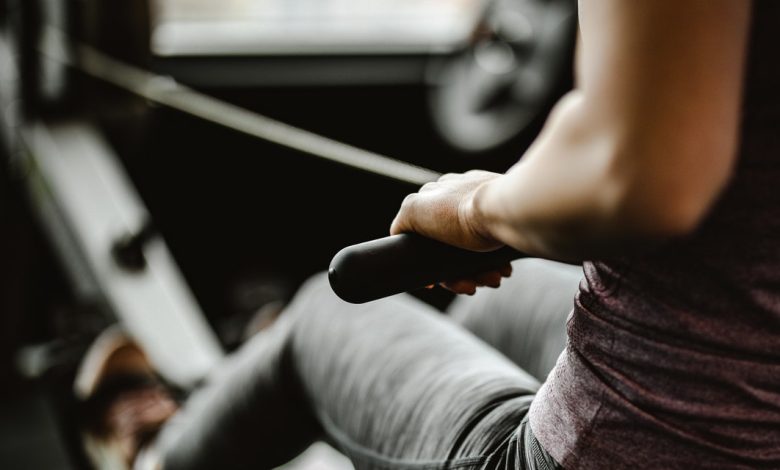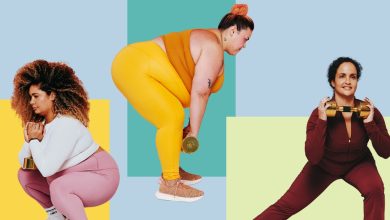10 Reasons to Add Rowing to Your Next Workout

The core stabilization you build through rowing can improve your day-to-day functioning in lots of ways, whether we’re talking about in the gym or outside of it—for example, allowing you to pick up heavy objects without straining yourself and keeping you upright when your foot hits a patch of ice or a dog barrels into your knees.
4. Your coordination gets a much-needed challenge.
Experienced rowers can make the activity look effortless, but it’s actually a pretty complicated movement. In fact, though it can seem like one fluid motion, there are actually four distinct parts of the rowing stroke: the catch, drive, finish, and recovery. And executing all four of these components with proper form is no easy feat. It’s no surprise then that among the many benefits of rowing machine workouts are that they’re “so good for coordination,” Parolini says. “Other types of gym workouts don’t require a ton of focus or harmony between the brain and the muscles,” Parolini says—like mindlessly pedaling on the indoor cycling bike or strolling on the treadmill, for example. But rowing “forces your brain to talk to your body,” she explains. And the control over your movement that you develop with rowing can help you find greater control in other moments of life, like when you’re decelerating to walk down stairs, lowering objects to the floor, or even bracing your core to swing your child around as you play with them, Parolini says.
5. You’ll stand up a little straighter.
Proper rowing form involves holding yourself upright on the seat, which engages all the muscles that help support good posture, including those in your core and back. Practicing this positioning through rowing can have carryover benefits to your day to day, Pryor says, since it makes you more mindful of how you’re holding your body in tons of scenarios. So whether you’re walking the dog, working at your desk, or chopping veggies in the kitchen, rowing you can help you sit (or stand) up a little straighter.
6. Your hips might feel a little looser.
It may not look like it at first glance, but rowing is essentially a deadlift in a horizontal position, Parolini says. And that classic exercise involves flexing and extending through the hip—a movement known as the hip hinge. When you do that rep after rep (after rep) on the rower, you load and unload your hamstrings on every stroke. This can boost your flexibility there and ultimately improve mobility in the hip joint, Parolini explains, since your hamstrings attach to your hips. That’s huge, since a lot of folks have tight, cranky hips and hammies thanks to all the time we spend sitting on our butts.
7. Your lower back might bark that much less.
Chronic low back pain is an unfortunately common ailment, affecting nearly a quarter of adults worldwide, according to Cleveland Clinic. Tightness in the hamstrings and lack of mobility in your hips can contribute to it, Parolini says, so by opening up these areas through rowing, you may find some relief for your achy back. That’s no small win!
8. You can gain a seriously cool sense of accomplishment.
Because rowing can be such a challenging activity to master, it can breed a certain type of mental toughness, Pryor says. You likely won’t nail perfect form the first (or second…or tenth) time you give it a whirl, but persevering and eventually seeing yourself break through to the next level can usher in an immense sense of accomplishment. In turn, feeling like a badass on the rower may just imbue you with confidence that spills over into other areas of your life, like finally asking for the promotion at work or drumming up the nerve to invite that cute barista on a date.
9. And cultivate ultimate zen vibes once you’ve got it down.
The repetitive, rhythmic nature of rowing can be incredibly calming, Pryor says. In particular, moving from the back of the machine towards the front is a “really cool” gliding feeling, Parolini says. In that sense, rowing can be a very soothing activity that puts you in a calm, meditative state. And with all the stress that’s swirling around the universe these days, who doesn’t want that?
10. It’s something you can do for the long haul.
There are tons of ways to adapt the rower to your body and mobility level—for example, by adjusting the seat positioning or fiddling with the resistance level—which makes it an activity you can do throughout your lifetime, Pryor explains. And like we mentioned before, it’s low impact, which means it’s a great pick for people who have limitations with higher-impact cardio, either chronically or temporarily, like if they’re pregnant, for example, or rehabbing an injury.



